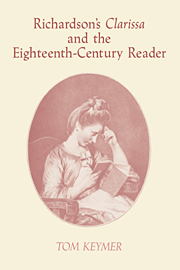Book contents
Postscript
Published online by Cambridge University Press: 24 October 2009
Summary
From Samuel Johnson to Ian Watt and beyond, critics of eighteenth-century fiction have tended to cast Richardson and Fielding as polar opposites, the vying pioneers of two alternative conceptions of the nature of fiction. While not underestimating the intelligence and creativity of Fielding's response to Richardson (qualities manifested in Shamela, the fifth number of the Jacobite's Journal, Fielding's letter on reading Clarissa, and many passages in Tom Jones), this study has presented a similar picture. Fielding's moral priorities, his construction of human nature, the informing ideologies of his writing and above all the narrative rhetoric through which he supervises the reading process all announce a radical divergence from the methods and concerns of his rival (in the words of his letter to Richardson) ‘for that coy Mrs. Fame’. In his last novel, however, Fielding is often seen to have moved towards a more Richardsonian stance, throwing new emphasis on the detailed representation of lived experience, and pursuing with new seriousness Tom Jones's more playful references to the moral and cognitive development expected to result from the reader's encounter with the text. ‘As Histories of this Kind’, he writes in the exordium to Amelia, ‘… may properly be called Models of Human Life; SO by observing minutely the several Incidents which tend to the Catastrophe or Completion of the whole, and the minute Causes whence those Incidents are produced, we shall best be instructed in this most useful of all Arts, which I call the Art of Life.’
- Type
- Chapter
- Information
- Richardson's 'Clarissa' and the Eighteenth-Century Reader , pp. 245 - 249Publisher: Cambridge University PressPrint publication year: 1992



